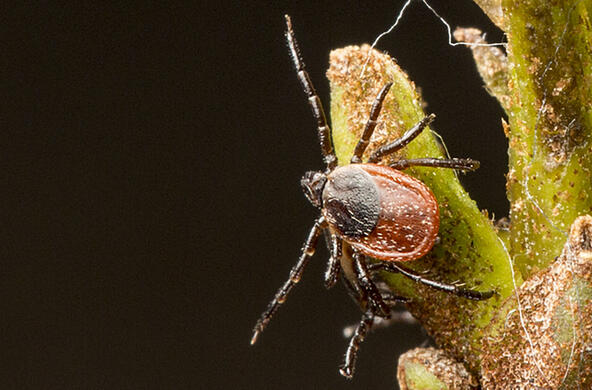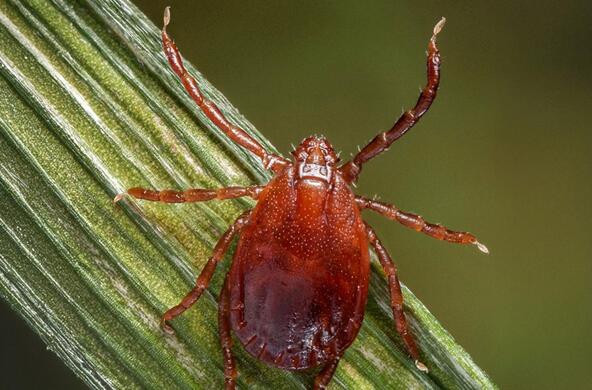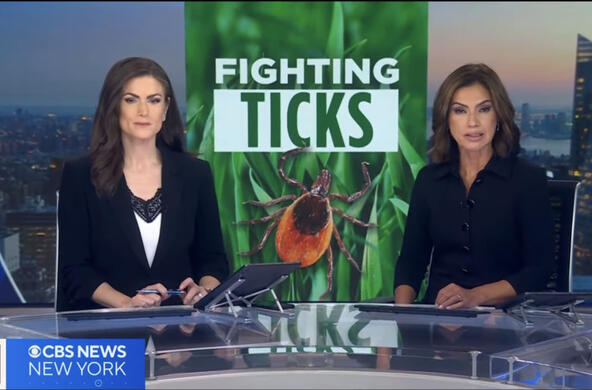We often blame white-tailed deer and the deer ticks they carry for spreading Lyme disease in the United States, especially from Minnesota to New England to Northern Virginia.
But if we insist on pointing fingers, we could make a co-conspirator case against small rodents like voles, mice and chipmunks.
Even then, we might be too quick to judge. If red fox weren't being killed and driven from so many of their haunts by exploding coyote populations, we'd probably have fewer small rodents to spread the Lyme disease bacteria, B. burgdorferi.
But why stop there? If European settlement of the United States hadn't driven gray wolves from all but a fraction of their original range, the coyote's range and its numbers probably wouldn't have boomed the past 50 years.
Complex stuff, these blame games and ecosystem management.
At least that's what a study at the University of California-Santa Cruz reminds us. The research — led by then-doctoral student Taal Levi, now an ecologist at the Cary Institute of Ecosystem Studies in New York — found increases in Lyme disease in the Northeast and Midwest the past three decades seldom correlated with deer abundance.
Instead, Levi found the disease consistently correlated to range-wide declines in red fox. In turn, low red-fox numbers correlated with increases in coyotes where fox once lived. Levi reached those conclusions through a computer analysis of red-fox populations in Wisconsin, Minnesota, Pennsylvania and Virginia. He also studied Lyme disease rates in relation to deer populations in Wisconsin, Pennsylvania, Virginia and New York.
Deer, no doubt, help cause high tick numbers because they can carry lots of adult breeding-age deer ticks. Some deer have been found with 1,000 adult ticks. But deer ticks most often spread Lyme disease to humans as nymphs, their second life-stage. That's when they're common on small rodents.
Lyme disease cases have increased about 300 percent in Wisconsin since 2000. During this time, landowner wildlife surveys by the Department of Natural Resources show red-fox declines and coyote increases statewide, which mirror hunting data. For instance, the fox kill decreased 80 percent from about 25,000 in 1984 to under 5,000 in 2009, while the coyote kill increased 660 percent from 6,847 to more than 52,000 those years. Predator hunting in Minnesota, Virginia and Pennsylvania recorded similar trends.
Meanwhile, deer observations — though high — were stable or declining in Wisconsin. In fact, deer densities in areas with the most Lyme disease cases didn't change much the past decade. That's likely because deer tend to quickly flush Lyme-causing bacteria from their system, unlike hosts such as white-footed mice, which can't clear it. In fact, a 2008 study found 80 to 90 percent of Lyme-infected ticks picked up the bacteria from shrews, the Eastern chipmunk and white-footed deermouse.
Why would Lyme disease increase as fox decline and coyotes rise? Here's the theory: As North America's coyotes expanded their range and population during the 1900s in the absence of gray wolves, they killed and displaced red fox, which prey heavily on small rodents.
In addition, red fox cache their prey for later consumption, which means they often keep killing when finding abundant prey. The expression "fox in the henhouse" rose from the fox's "mass-murder" behavior. They don't just kill their daily need and eat it. They might wipe out the entire coop.
Further, as fox decrease and rodents increase, coyotes occupying former fox country don't control small rodents. Not only are coyote populations typically smaller than the fox population they killed or evicted, coyotes prefer rabbits, hares, pets, fawns and even adult deer over pint-size prey.
As a result, a growing army of rodents is carrying the larvae and infected nymphs of deer ticks. The red fox's preying and caching habits, together with its ability to live and thrive among humans, suggests it could play a vital role in reducing Lyme disease hosts where humans live, work and recreate. Thus, unless red fox rebound or nature finds other ways to curb rodent populations, Lyme disease will likely keep plaguing hunters, campers, anglers, hikers and other outdoor recreationists.
So, where do we go from here? Levi suggests further study to see if manipulation of predator populations — presumably through hunting and trapping — could control Lyme disease. This might be done by reducing coyotes and increasing fox while reducing deer. Why deer? Because even though deer seldom directly transmit Lyme disease by ticks they carry, they boost tick populations and their range by being the preferred host of adult, breeding-stage ticks.
If nothing else, it's tough to argue with Levi's observation that changes in predator populations the past 100 years might have had unintended consequences for human disease.








